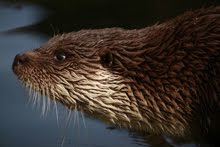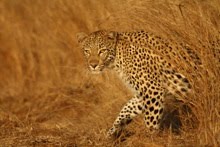
Initially, I struggled to get close to them and they were very shy. This is the same experience I have had in the past where the snowfinches are incredibly shy and weary initially in the morning, but as more and more people arrive at the lift station, they tend to get more accepting of their presence and will let people approach them within a few meters before flying off. Having said that, they usually reach their limit by about 9:30 10:00 am, at which stage they all but dissappear. I am not sure if it is jus that the majority of the birds have fed enough by that stage, that they move off and are no longer tied to the feeder. Or it might be that the sheer number of skiers bashing about their feeding ground reaches a point beyond which they are no longer prepared to put up with. I suspect that both factors play a role in their feeding behaviour.

Another thing that I have found interesting in their winter feeding behaviour is that they are almost always in flocks (at least where I have seen them). The flock of 250ish birds in Kühtai tends to stick loosely together, sometimes splitting in to smaller flocks, but these smaller flocks also tend to incorporate at least 20 birds.
Having said that, recently I have noticed more and more singles heading off from the flock in to the mountains, and last week I saw a lone white-winged snowfinch up on a peak (Nösslachjoch) near Steinach am Brenner. Being such hardy high altitude birds with only very short (if any) altitudinal migration, and an astonishingly early breeding season given the snowy nature of their preferred habitat, it is not surprising that they may already be thinking about setting up territories and getting ready for the breeding season.

Another piece of evidence for breeding preparation is that about 20-30% of the snowfinches in the Kühtai flock already had darker or black bills - the only minor change that they make in their change to breeding plumage.
It seems like spring is on its way here in the Alps of Austria, even if the meters of snow we are getting is doing its best to deny the fact...
Digibinning techinque
Taking digital photos through binoculars can be rather difficult, particularly if the light is poor. The two hardest things about digibinning the snowfinches was that the light was low (because of the heavy snow and fog), and blown out (lots of matt, bright white and dark areas too dark for detail). These are tough lighting conditions even for the best dSLR cameras, let alone a small point-and-shoot like the Canon A590IS I use for digibinning and digiscoping. With a little bit of patience, I found that I could get some okay shots through my binoculars (well, they are swarovski EL's after all ;-)
The trick to taking photos through binoculars is to:
- get good light
- get close enough to not have to use the camera's zoom (a real image-killer as the lenses on the small point and shoot digital cameras are rather poor, in general)
- get good light
- hold the binoculars vertical in your left hand, having access to the focus knob with your left hand's fingers, and freeing up your right hand to handle the camera
- use a good pair of binoculars - high quality lenses are likely to give you much more light (faster shutter speeds = sharper images) and a better quality of image.
- if you are lucky, your camera's lens will fit snuggly in to the eye-cup of your binoculars. If this is not the case, you will either need to use something like the swarovski snapshot adaptor, or try your luck with holding the camera lens at the right angle and in the right position (no easy feat, but I have done it for some decent video and photos of leopards and black rhino as well as an African Fish Eagle - beautiful!)
- With the binoculars rested on your lower hand, lower fingers focussing, and right hand free to operate the camera, you are all set to find subjects.
- Backlight is a real photo-killer for digibinning, so you will want to position yourself with the light shining on the subject.
If you look at the three snowfinch images above, you will immediately notice a few things:
For more info on digibinning, see some other posts here.
Happy birding
Dale Forbes
- Vignetting can be an issue. This can be avoided by zooming the camer a little bit, but this has two major side effects: 1. you put more strain on the camera lens which tends to produce softer/blurred images, and 2. you reduce the maximum possible shutter speed
- Because the lighting was harsh, the image resutls tend to have blown out whites, and feature-less darks. this can be corrected to some extent by post-processing (see the first snowfinch image with the one snowfinch flying towards the feeder). In this image I reduced the intensity of the highlights and brightened the darks. The result is that one can now see more details, but - unfortunately - the image looks photoshopped and artificial.
- Even under tough conditions, digibinning can help you get a few photos to take home with you! (even if they are not always national geographic-ready)
For more info on digibinning, see some other posts here.
Happy birding
Dale Forbes










.jpg)








.jpg)



No comments:
Post a Comment